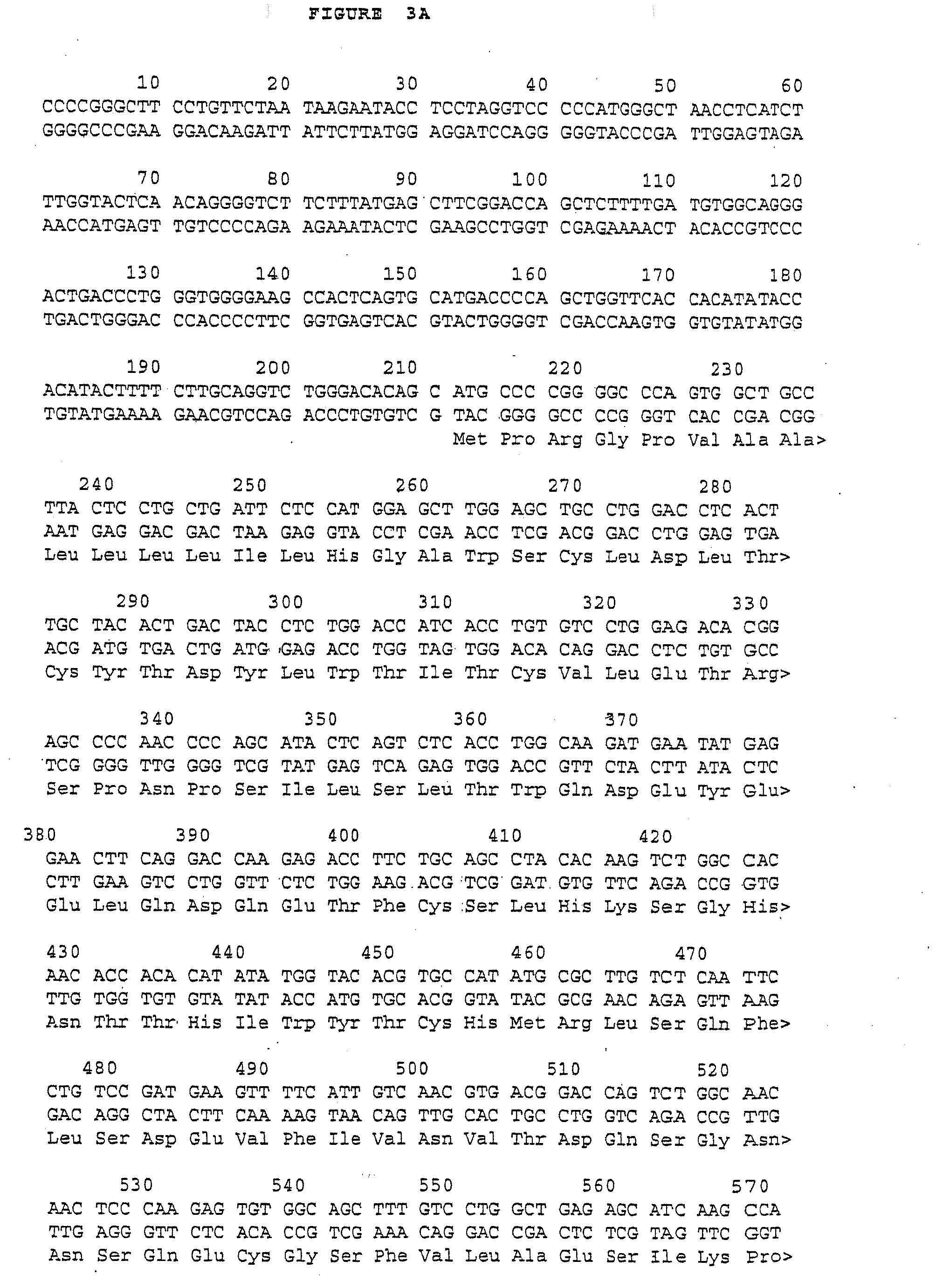Methods of Modifying Eukaryotic Cells
a technology of eukaryotic cells and eukaryotic cells, which is applied in the field of methods of modifying eukaryotic cells, can solve the problems of limiting the immune response of mice, reducing the final overall b cell population,
- Summary
- Abstract
- Description
- Claims
- Application Information
AI Technical Summary
Benefits of technology
Problems solved by technology
Method used
Image
Examples
example 1
Engineering Mouse ES Cells Bearing a Deletion of the OCR10 Gene
[0061]a. Selection of a large genomic DNA clone containing mOCR10. A Bacterial Artificial Chromosome (BAC) clone carrying a large genomic DNA fragment that contained the coding sequence of the mouse OCR10 (mOCR10) gene was obtained by screening an arrayed mouse genomic DNA BAC library (Incyte Genomics) using PCR. The primers employed to screen this library were derived from the mOCR10 gene cDNA sequence. Two primer pairs where used: (a) OCR10.RAA (SEQ ID NO:1) and OCR10.PVIrc (SEQ ID NO:2) which amplifies a 102 by DNA; and (b) OCR10.TDY (SEQ ID NO:3)) and OCR10.QETrc (SEQ ID NO:4)) which amplifies a 1500 by DNA. This mOCR10 BAC contained approximately 180 kb of genomic DNA including the complete mOCR10 coding sequence. This BAC clone was used to generate an LTVEC which was subsequently used to delete a portion of the coding region of mOCR10 while simultaneously introducing a reporter gene whose initiation codon precisely...
example 2
[0070]Increased Targeting Frequency and Abrogation of the Need to Use Isogenic DNA when LTVECs are used as the Targeting Vectors
[0071]As noted above, the increased targeting frequency obtained using long homology arms should diminish the benefit, if any, derived from using genomic DNA in constructing LTVECs that is isogenic with (i.e. identical in sequence to) the DNA of the eukaryotic cell being targeted. To test this hypothesis, Applicants have constructed numerous LTVECs using genomic DNA derived from the same mouse substrain as the eukaryotic cell to be targeted (presumably isogenic), and numerous other LTVECs using genomic DNA derived from mouse substrains differing from that of the eukaryotic cell to be targeted (presumably non-isogenic). The two sets of LTVECs exhibited similar targeting frequencies, ranging from 1-13%, indicating that the rate of successful targeting using LTVECs does not depend on isogenicity.
[0072]The approach of creating LTVECs and directly using them as ...
example 3
Use of LTVECs to Produce Chimeric and Human Antibodies
[0073]a. Introduction. The rearrangement of variable region genes during the initial development of B cells is the primary mechanism whereby the immune system produces antibodies capable of recognizing the huge number of antigens that it may encounter. Essentially, through DNA rearrangements during B cell development, a huge repertoire of variable (V) region sequences are assembled which are subsequently joined to a constant (C) region to produce complete heavy and light chains which assemble to form an antibody. After functional antibodies have been assembled, somatic hypermutation which occurs in the secondary lymphoid organs, introduces further diversity which enables the organism to select and optimize the affinity of the antibody.
[0074]The production of antibodies to various antigens in non-human species initially provided great promise for the large scale production of antibodies that could be used as human therapeutics. Sp...
PUM
| Property | Measurement | Unit |
|---|---|---|
| targeting frequency | aaaaa | aaaaa |
| size | aaaaa | aaaaa |
| nucleic acid | aaaaa | aaaaa |
Abstract
Description
Claims
Application Information
 Login to View More
Login to View More - R&D
- Intellectual Property
- Life Sciences
- Materials
- Tech Scout
- Unparalleled Data Quality
- Higher Quality Content
- 60% Fewer Hallucinations
Browse by: Latest US Patents, China's latest patents, Technical Efficacy Thesaurus, Application Domain, Technology Topic, Popular Technical Reports.
© 2025 PatSnap. All rights reserved.Legal|Privacy policy|Modern Slavery Act Transparency Statement|Sitemap|About US| Contact US: help@patsnap.com



